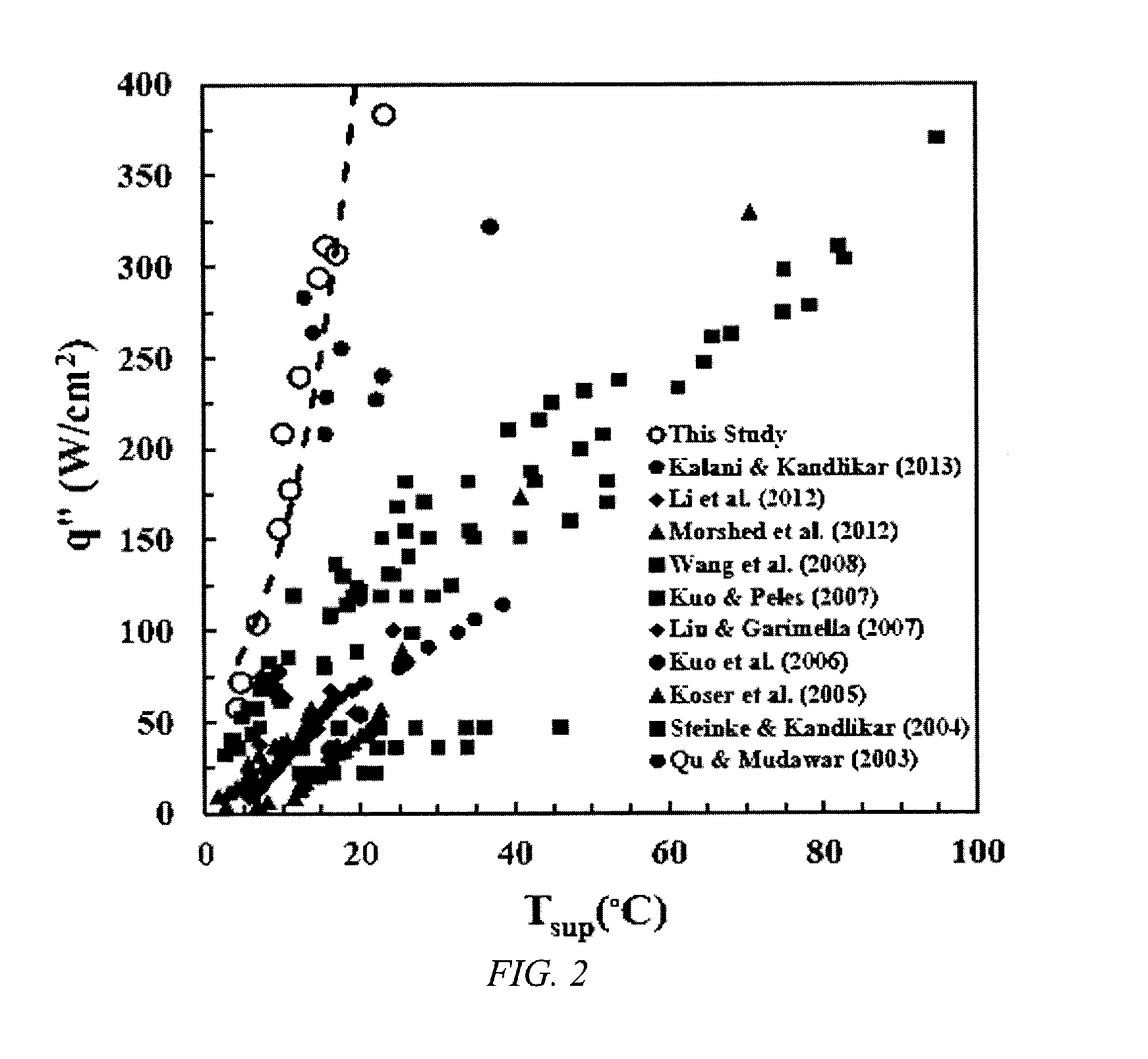Hierarchical Hydrophilic/Hydrophobic Micro/Nanostructures for Pushing the Limits of Critical Heat Flux
a hydrophilic/hydrophobic micro/nanostructure technology, applied in indirect heat exchangers, laminated elements, lighting and heating apparatus, etc., can solve the problems of low cost and reliability, high heat flux dissipation has become critical, and the use of microchannels for single-phase cooling has been pursued but limited, so as to achieve easy balance of liquid introduction rate and alleviate flow instabilities , the effect of modifying the location and shape of the meniscus
- Summary
- Abstract
- Description
- Claims
- Application Information
AI Technical Summary
Benefits of technology
Problems solved by technology
Method used
Image
Examples
Embodiment Construction
[0053]Embodiments of the invention are directed to heat sinks that require, but are not limited to, a single liquid fluid inlet and have exclusively a vapor fluid outlet through a membrane. The liquid fluid portion of a heat sink, according to an embodiment of the invention, is illustrated in FIG. 1. The fluid can be any fluid, ranging from water through hydrofluorocarbon refrigerants, for example: trifluoromethane, difluoromethane, fluoromethane, pentafluoroethane, pentafluorodimethyl ether, 1,1,2,2-tetrafluoroethane, 1,1,1,2-tetrafluoroethane, bis(difluoromethyl)ether, 1,1,2-trifluoroethane, 1,1,1-trifluoroethane, methyl trifluoromethyl ether, 2,2,2-trifluoroethyl methyl ether, 1,2-difluoroethane, 1,1-difluoroethane, fluoroethane, 1,1,2,2,3,3,3-heptafluoropropane, trifluoromethyl 1,1,2,2-tetrafluoroethyl ether, 1,1,1,2,3,3,3-heptafluoropropane, trifluoromethyl 1,2,2,2-tetrafluoroethyl ether, 1,1,1,2,2,3-hexafluoropropane, 1,1,1,2,3,3-hexafluoropropane, 1,1,1,3,3,3-hexafluoropropan...
PUM
| Property | Measurement | Unit |
|---|---|---|
| period of time | aaaaa | aaaaa |
| boiling point | aaaaa | aaaaa |
| contact angle | aaaaa | aaaaa |
Abstract
Description
Claims
Application Information
 Login to View More
Login to View More - R&D
- Intellectual Property
- Life Sciences
- Materials
- Tech Scout
- Unparalleled Data Quality
- Higher Quality Content
- 60% Fewer Hallucinations
Browse by: Latest US Patents, China's latest patents, Technical Efficacy Thesaurus, Application Domain, Technology Topic, Popular Technical Reports.
© 2025 PatSnap. All rights reserved.Legal|Privacy policy|Modern Slavery Act Transparency Statement|Sitemap|About US| Contact US: help@patsnap.com



